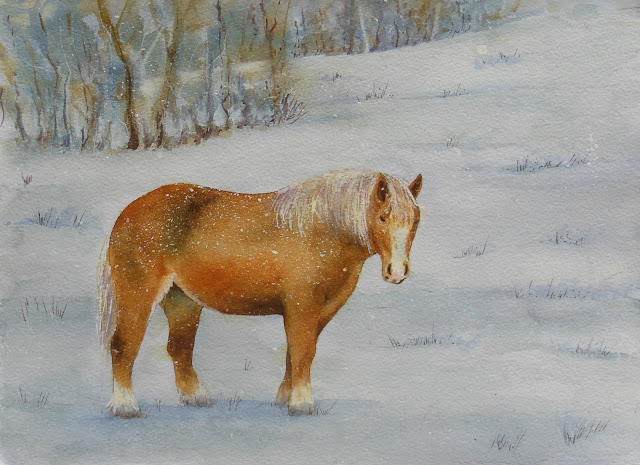 |
| I have worked on adding more white and also added some green to start the leaves. The white is almost done. |
 |
| I have worked on the flower and leaves adding some shadows and a few more highlights and details. |
 |
| I have worked on adding more white and also added some green to start the leaves. The white is almost done. |
 |
| I have worked on the flower and leaves adding some shadows and a few more highlights and details. |
 |
| Still working with the white. Have used a little black to push a few things back. Need to keep working with the white and then will use glazes of color and some darks as needed as well as details. |
 |
| I glazed yellow in the background and added more white to the mushrooms. This needs quite a lot more work, barely started. |
 |
| I used a scrubber to add white to the land in the back, behind the trees. |
 |
| Plexiglas, Daniel Smith transparent watercolor ground and watercolor on one side, Liquitex clear gesso and colored pencil on the other side. I worked more on the skin. Need to begin the hair... |
 |
| Yupo (translucent), blue alcohol ink, Liquitex clear gesso, colored pencil. This is at the start, need to work on the values and the details. |
 |
| Yupo (translucent), alcohol inks, Liquitex clear gesso. |
 |
| Yupo (translucent), alcohol inks |
 |
| I started with white on the mushroom. I mixed a dark green for the background (black, yellow, and a little red). I will continue with this for the values and begin adding details as well. |
 |
| I added more rubber cement, let it dry, and painted red. |
 |
| I have used rubber cement to make grass texture. Masking fluid could be used as well. This needs more layers (which will make it easier to see as well). |
 |
| I started with white, painting the values (various values of white from opaque to transparent). I started glazing some color. |
 |
| This is a sample from another class. Acrylic, bubble wrap texture, painted the petals with white first and then the yellow and red. Left the background showing in the middle. This is not done. |
 |
| Rubber cement texture done in another class. This one has two layers. |
 |
| Wax paper texture. Acrylic on cheap watercolor paper. I wet the paper, dropped in the color. crumpled the wax paper, laid it one top, and weighed it down. Then let it dry. |
 |
| Wet in wet. Acrylic on cheap watercolor paper. I wet the paper and dropped in color. This one needs another layer or two of color. |
 |
| Wet in wet. Acrylic on cheap watercolor paper. I wet the paper and used leftover paint to create a background. This is a good use of your leftover paint after a painting session. |
 |
| Local color |
 |
| I briefly demonstrated the beginning of adding the white when starting on a local color project. |
 |
| Value Study |
 |
| Color added and the beginning of the white. |
 |
| Demonstrated the start of adding details. I used darks such as dark brown and dark red. |
 |
| I have lifted and moved more areas. There is some refining to do, but this is getting close. |
 |
| This is after the first pour, the second round of masking has been added. |
 |
| This is after the second pour, right before I did the third round of masking. |
 |
| This is after the third pour and the masking has been removed. |
 |
| Rubber cement resist texture, step 1, watercolor. Can be done with acrylic and gouache as well. |
 |
| Rubber cement resist texture, step 2, watercolor. Can be done with acrylic and gouache as well. |
 |
| Rubber cement resist texture, step 3, watercolor. This is after the 3rd pass of rubber cement and paint. Here I decide to add more or remove the rubber cement. |
 |
| I have added more colored pencil to this watercolor under painting (the surface is Stonehenge paper). |
 |
| This is the same process from another class. Both need more work of course. |
 |
| This is an example of our next project. We will do a different subject matter. We will do alcohol inks on translucent yupo and then add a clear gesso (Liquitex) and work in colored pencil on top. |
 |
| This is a similar example, just not as far along as the first. |